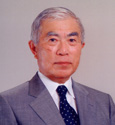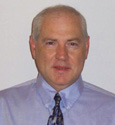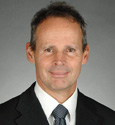Conference Program
Program at a Glance 
Final Program 
Plenary Session (Tuesday June 22)
| Time | Speech Title | Speaker | Affiliation |
|---|---|---|---|
| 9:00 | 9:30 |
Opening address | Dr. Shinzo TAMAI | President, IEEJ-IAS |
| Welcome address | Prof. Atsuo KAWAMURA | Chair, Steering Committee | |
| Congratulatory message | Prof. Deepak DIVAN | President, IEEE PELS | |
| Congratulatory message | Prof. Chung-Yuen WON | President, KIPE (2011) | |
| Congratulatory message | Prof. Jinjun Liu | Representative of President, CES (2012), CES ECCE Asia Liaison | |
| Isao Takahashi Award | Prof. Hirofumi AKAGI | Chair, Organizing Committee | |
| Report on IPEC Papers | Prof. Yukihiko SATO | Chair, Technical Program Committee | |
| 9:30 | 10:15 |
Railway Technologies in the Next Decade and Power Electronics | Dr. Eisuke Masada | Chairman Railway Technical Research Institute Japan |
| 10:15 | 11:00 |
Progress on High Temperature Superconductor Propulsion Motors and Direct Connect Wind Generators | Dr.Gregory Snitchler | Manager Electromagnetic Design and Test Engineering American Superconductor Corp. |
| 11:00 | 11:45 |
Enabled by High Power Electronics - Energy efficiency, Renewables and Smart Grid | Dr. Peter Steimer | Vice President Innovation Power Electronics and MV Drives ABB Ltd. |
Railway Technologies in the Next Decade and Power Electronics
 Dr. Eisuke Masada
Dr. Eisuke Masada
Chairman
Railway Technical Research Institute Japan
Eisuke Masada was born in Ichikawa, Japan, in 1937. He received the B.E., M.E., and Ph.D. degrees in electrical engineering from the University of Tokyo, Japan, in 1960, 62 and 65, respectively.
He was a Professor in the Department of Electrical Engineering from 1982 to 1998 at the University of Tokyo and is its Professor Emeritus. He is currently the Chairman of Railway Technical Research Institute Japan, a Member of the Board of Directors of Fuji Electric Holdings Co., and the Vice President of Japanese Industrial Standards Committee.
Dr. Masada is a member of the IEE Japan, IEEE, VDE and EPE Association.
Speech Summary:
The existing state of railways in Japan from urban transports to high speed rail is shortly introduced in relation with social demands and technologies. The results of the study on the railway technology in 2020 are explained. The research map for the development of necessary technologies for the next decade is shown on the basis of the results. Power electronics is considered to be key technologies in speeding up for over 400km/h operation and more efficient use of energy in the railway system as a whole. The technical problems to be solved are discussed. The future prospects of railways in Japan are given as the conclusion of presentation.
>>TOP
Progress on High Temperature Superconductor Propulsion Motors and Direct Connect Wind Generators
 Dr. Gregory Snitchler
Dr. Gregory Snitchler
Manager
Electromagnetic Design and Test Engineering
American Superconductor Corp.
Dr. Snitchler is the Manager of Electromagnetic Design and Test Engineering. He is responsible for the electromagnetic (EM) design of HTS motors, design of the HTS field windings and testing of field windings and motors. He has 20 years experience in superconducting devices and rotating machines. He is the principal investigator for the NIST-ATP HTS wind generator technology development project. He was responsible for the EM design of a 5000 hp 1800 rpm motor, the 5 MW naval propulsion motor, and more recently the 36.5 MW motor. Prior to joining American Superconductor, Dr. Snitchler served as a Physicist at the Superconducting Collider (SSC) from 1989 - 1994. As Analysis Group Leader, he led the development of the analysis capability for a superconducting accelerator magnet design including thermal, mechanical, and magnetic analysis. Dr. Snitchler has numerous publications and holds 30 patents in motor technology and superconductivity.
Speech Summary:
The second generation (2G) high temperature superconductor (HTS) wire is a revolutionary technology that enables the development of high power and high torque density rotating machines with broad applications. The development of synchronous motors with 1G HTS field windings for ship propulsion applications has progressed to the point where full scale motors have been fabricated and full load tested. Additionally, a significant effort to develop direct-drive wind turbine generators is in progress. A generator conceptual design, refrigeration hardware, and prototype 2G HTS field winding poles have been completed to validate the technologies for a 10 MW direct-drive wind turbine. Propulsion motors, wind generators, and other industrial applications utilizing rotors with HTS fielding windings will be discussed. A market entry point for the wind generator system will be presented.
>>TOP
Enabled by High Power Electronics - Energy efficiency, Renewables and Smart Grid
 Dr. Peter K. Steimer
Dr. Peter K. Steimer
Vice President Innovation
Power Electronics and MV Drives
ABB Ltd.
Speech Summary:
The global demand for electrical energy is growing continuously, at double the growth rate of primary energy consumption. A clear transition to more electric energy systems is mandatory as energy efficiency from primary fuel to the enduser and the integration of renewables are the future key challenges. This transition to more electrical energy systems requires the transformation of today’s electric power system to a much smarter future grid.
High power electronics is the key technology to build the next generation of the more electrical energy systems to support the major trends in energy efficiency, renewables integration and smart grid. High power electronics will continue to innovate itself due to the substantial improvement of conventional silicon devices and their packaging technologies reaching higher junction temperature and voltage levels. New wide band-gap material with substantial application benefit will enter niche markets. Multiple new multi-level topologies will change high power electronics fundamentally to support energy efficiency and the direct connection of standard power equipment.
Energy efficiency is the most important topic: A real step change in regards of efficient use of primary energy is needed. Energy efficiency requires focus on efficient electrical power generation including mandatory use of waste heat, hybrid and pure electrical transportation and increased industrial process efficiency. We need to create an energy-efficient culture - from primary energy to end user - supported by strong global regulations. As energy as such will increase in value, efficient use will get more and more attractive.
The fast transition to more renewables energy sources is the other important topic. The energy of fifty hours of sunshine hitting the earth is equivalent to the energy stored in coal reserves globally. Yes, it is! Therefore the future dominant role of the most important renewables, i.e. solar and wind, is actually unquestionable. The question mark lies on the speed of the transition. Especially solar power, as simple technology in the application, will develop much faster than expected. Its speed in the last years has always exceeded expectations. The same is valid for wind power since more than a decade. Again this important change needs to be supported by strong global regulations to achieve speed and competitiveness in the market place in this transition phase.
And last but not least: To harvest all the investments done in our AC grids, the transition to a much smarter grid is mandatory. Such a smart grid will be based on two key ingredients: Intelligence and High power electronics. Intelligence will allow a better utilization of existing assets and will increase the stability margin of the conventional AC grid. High power electronics will mainly add new DC grids and AC Var sources at the transmission and distribution level, serving as backbones and additional stability pillars to existing AC grids.
>>TOP




